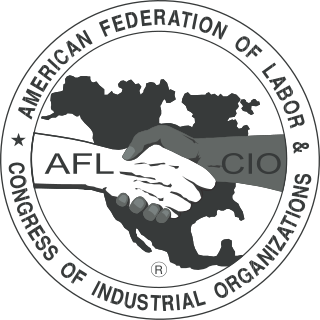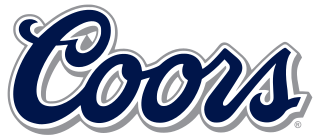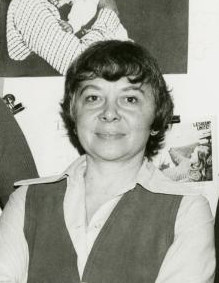
Lesbian, gay, bisexual, and transgender (LGBT) movements are social movements that advocate for LGBT people in society. Although there is not a primary or an overarching central organization that represents all LGBT people and their interests, numerous LGBT rights organizations are active worldwide. The first organization to promote LGBT rights was the Scientific-Humanitarian Committee, founded in 1897 in Berlin.

The American Federation of Labor and Congress of Industrial Organizations (AFL-CIO) is a national trade union center that is the largest federation of unions in the United States. It is made up of 60 national and international unions, together representing more than 12 million active and retired workers. The AFL-CIO engages in substantial political spending and activism, typically in support of progressive and pro-labor policies.

The Coors Brewing Company is an American brewery and beer company based in Golden, Colorado that was founded in 1873. In 2005, Adolph Coors Company, the holding company that owned Coors Brewing, merged with Molson, Inc. to become Molson Coors. The first Coors brewery location in Golden, Colorado is the largest single brewing facility operating in the world.

Urvashi Vaid was an Indian-born American LGBT rights activist, lawyer, and writer. An expert in gender and sexuality law, she was a consultant in attaining specific goals of social justice. She held a series of roles at the National LGBTQ Task Force, serving as executive director from 1989-1992 — the first woman of color to lead a national gay-and-lesbian organization. She is the author of Virtual Equality: The Mainstreaming of Gay and Lesbian Liberation (1995) and Irresistible Revolution: Confronting Race, Class and the Assumptions of LGBT Politics (2012).
The origin of the LGBT student movement can be linked to other activist movements from the mid-20th century in the United States. The Civil Rights Movement and Second-wave feminist movement were working towards equal rights for other minority groups in the United States. Though the student movement began a few years before the Stonewall riots, the riots helped to spur the student movement to take more action in the US. Despite this, the overall view of these gay liberation student organizations received minimal attention from contemporary LGBT historians. This oversight stems from the idea that the organizations were founded with haste as a result of the riots. Others historians argue that this group gives too much credit to groups that disagree with some of the basic principles of activist LGBT organizations.

Ruth Simpson was the founder of the United States' first lesbian community center, an author, and former president of Daughters of Bilitis, New York.
Gary William Kinsman is a Canadian sociologist. Born in Toronto, he is one of Canada's leading academics on lesbian, gay, bisexual, and transgender issues. In 1987, he wrote one of the key Canadian texts on LGBT social history, Regulation of Desire, reprinted in 1995. In 2000, he edited and co-authored a second work, on Canadian federal government surveillance of marginal and dissident political and social groups, Whose National Security? In 2010, Kinsman's newest book, The Canadian War on Queers: National Security as Sexual Regulation, co-written with Patrizia Gentile, was published by University of British Columbia Press and released on 1 March.

The Asian Pacific American Labor Alliance (APALA) is a nonprofit organization of Asian-Pacific American trade union members affiliated with the AFL–CIO. It was the "first and only national organization for Asian Pacific American union members".

The Coalition of Labor Union Women (CLUW) is a nonprofit, nonpartisan organization of trade union women affiliated with the AFL–CIO. The CLUW is a bridging organization that seeks to create connections between the feminist movement and the labor movement in the United States. The organization works towards overcoming past constraints and conflicts in pursuance of relationship improvement between those movements, and thus enabling broad coalitions. The CLUW is the only national organization solely for women union members and is one of six constituency groups within the AFL–CIO. It is based in the headquarters of the AFL–CIO in Washington, D.C. CLUW pursues by four goals: to bring women into union leadership, to organize unorganized women workers, to bring women's issues onto the labor agenda, and to involve women into political action.

LGBT pride is the promotion of the self-affirmation, dignity, equality, and increased visibility of lesbian, gay, bisexual, and transgender (LGBT) people as a social group. Pride, as opposed to shame and social stigma, is the predominant outlook that bolsters most LGBT rights movements. Pride has lent its name to LGBT-themed organizations, institutes, foundations, book titles, periodicals, a cable TV channel, and the Pride Library.
Gloria Johnson was an important figure within the LGBT community in San Diego, California.
The California Immigrant Workers Association(CIWA) was an AFL–CIO associate membership organization from 1989–1994. Initiated by AFL–CIO regional director David Sicker with support from labor unions in California, CIWA helped undocumented immigrants to regularized their immigration status under the Immigration Reform and Control Act of 1986, and supported organizing campaigns among immigrant workers into the labor movement.
The Gay and Lesbian Labor Activists Network (GALLAN) is a non-profit organization of trade unionists founded in 1987 by Tess Ewing, Harneen Chernow, Susan Moir, Cheryl Schaffer, Nancy Marks, Gerry Thomas, Tom Barbara and Diane Fry and a few other members of Boston's LGBTQ community. GALLAN's main purpose was to support LGBTQ rights and oppose homophobia in the workforce, as well as push its unions to campaign for anti-discriminatory measures and benefits packages. GALLAN started as a series of potluck dinners and discussions, and later hosted events for the community in partnership with labor unions to campaign for LGBTQ rights in Massachusetts.

Rainbow capitalism is the involvement of capitalism, corporatism, and consumerism in appropriating and profiting from the LGBT movement. It developed in the 20th and 21st centuries as the LGBT community became more accepted in society and developed sufficient purchasing power, known as pink money. Early rainbow capitalism was limited to gay bars and gay bathhouses, though it expanded to most industries by the early-21st century.
Pat Norman was an American activist for women's rights, as well as the rights of the African American and LGBT communities.
The National LGBTQ Wall of Honor is an American memorial wall in Greenwich Village, Lower Manhattan, New York City, dedicated to LGBTQ "pioneers, trailblazers, and heroes". Located inside the Stonewall Inn, the wall is part of the Stonewall National Monument, the first U.S. National Monument dedicated to LGBTQ rights and history. The first fifty nominees were announced in June 2019, with the wall unveiled on June 27, 2019, as a part of Stonewall 50 – WorldPride NYC 2019 events. Five honorees will be added annually.
Nancy Wohlforth is an American union leader and activist who has advocated for a variety of civil, labor, and LGBTQ causes throughout her career including single-payer healthcare, domestic partner worker benefits, and non-discrimination protections for LGBTQ workers. She was the first out member of the LGBTQ community to be elected to the AFL–CIO Executive Council in 2005.

The Coors strike and boycott was a series of boycotts and strike action against the Coors Brewing Company, based in Golden, Colorado, United States. Initially local, the boycott started in the late 1960s and continued through the 1970s, coinciding with a labor strike at the company's brewery in 1977. The strike ended the following year in failure for the union, which Coors forced to dissolve. The boycott, however, lasted until the mid-1980s, when it was more or less ended.










